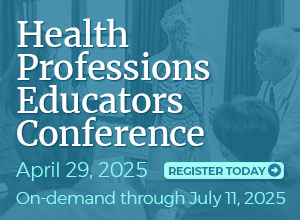Creating a Strong Chair-Dean Partnership: What Chairs Can Do from Their End (Part 2)
In Part 1 of this two-part series on strengthening the relationship between chairs and deans, we discussed prioritizing student success and satisfaction, capitalizing on the institution’s greatest investment—the faculty— and developing a vision that goes beyond departmental considerations. Here we will continue with three additional points detailing what a chair...
Creating a Strong Chair-Dean Partnership: What Chairs Can Do from Their End (Part 1)
In viewing the organizational structure of our colleges and universities, there is a common hierarchy of faculty, chairs, deans, and higher administration that includes a president or campus leader and may include a provost or the equivalent. Much has been written about the interaction of chairs with their faculty. Inherent...
Why and How We Should Choose Civility in Academic Workplaces
A positive and productive departmental climate can often seem like love. We might admire it from afar and wish we had that luck, although we can learn to cope by developing a hobby, lowering our expectations, or cultivating other relationships. We might blame our current unhappiness on our own mates...
Target Mentoring: A Tailored Mentoring Program for Faculty
t the University of Maine, my colleagues and I have conducted a lot of research on faculty mentoring. The campus-wide Rising Tide Center—funded originally by a National Science Foundation ADVANCE grant—has helped implement several kinds of mentoring programs across our campus, finding that a combination of mentoring programs is best...
Petty Principles for Women in Higher Education: Realistic and Practical Advice for Success in Higher Education Leadership
According to recent research, women in higher education continue to consistently be underrepresented at the administrative levels of dean, chief academic officers, provost, and president (Gallant, 2014). There are numerous motives identified by researchers for the persistence of the underrepresentation of women in the top ranks of leadership in higher...
Developing Critical Cross-cultural Communicative Competence in Academic Leaders
According to Chun and Evans (2018), continued white hegemonic practices in university and college administration and faculty have failed to develop a representative institutional culture and organizational structure that is responsive to the needs of diverse students and faculty. The purpose of this article is to discuss this issue, relate...
Rewarding Excellent Support for Non-tenure-track Faculty, Part II
The annual Delphi Award presents a $15,000 cash award to each of two applicants who have worked to support non-tenure-track, contingent and/or adjunct faculty. In the first installment of this article, we examined how California State University, Dominguez Hills, supports its non-tenure-track faculty. We continue with the next institution recognized...
Rewarding Excellent Support for Non-tenure-track Faculty, Part I
For decades, campuses have hired increasing numbers of non-tenure track faculty. The number of adjunct faculty is now more than 52 percent of faculty nationally and full-time non-tenure track make up another 18 percent of the faculty, with all types of non-tenure-track faculty (NTTF) accounting for 70 percent of faculty...
Auditing Diversity: Academic Leadership’s Instrumental Role
In an era of rapid demographic change in the U.S. population coupled with declining demand for higher education, many colleges and universities are grappling with the urgent need to attract and retain diverse student, faculty, and staff populations and provide an inclusive learning, living, and working environment on campus. Such...
Pitfalls of Using Student Comments in the Evaluation of Faculty
The use—or misuse—of student ratings of instruction (SRIs) in faculty evaluation is a frequent topic in higher education news. Unfortunately, popular press articles on the topic often garner more attention than the vast empirical literature. A recent review of the research by Linse (2017) pointed to common misperceptions about SRIs,...











